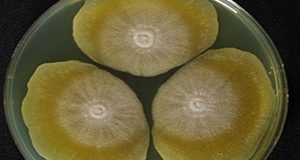
All pine species in Florida are susceptible to red heart disease. The disease can decrease timber value and weaken trees, making them threats to people and property. In forests, however, the same disease can be beneficial to cavity-nesting animals like red-cockaded woodpeckers. This 3-page fact sheet written by Yin-Tse Huang, Jeffrey Eickwort, and Jiri Hulcr and published by the UF/IFAS School of Forest Resources and Conservation describes the disease and provides some tips to manage it in areas where it could cause problems for people.
http://edis.ifas.ufl.edu/fr425
Tag: Yin-Tse Huang
Geosmithia Species in Florida: Common Fungal Symbionts of Wood-Boring Bark Beetles
Geosmithia are fungi associated with wood-boring bark beetles. Most Geosmithia species do no harm to host trees, but the canker-causing Geosmithia morbida and its beetle vector, the walnut twig beetle, cause the disease complex known as thousand cankers disease on walnut trees. Continuous surveys in Florida have found neither Geosmithia morbida nor its beetle vector in the state, but many native Geosmithia species have been recovered. These native species look similar to the pathogenic fungus but are harmless to their plant hosts. This 4-page fact sheet written by Yin-Tse Huang and Jiri Hulcr and published by the UF/IFAS School of Forest Resources and Conservation provides basic guidelines to sample Geosmithia species in the field and information for distinguishing the plant pathogenic Geosmithia morbida from other Geosmithia species.
http://edis.ifas.ufl.edu/fr412
